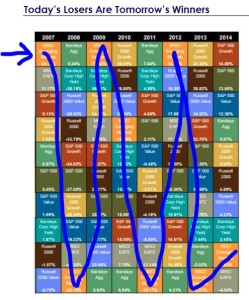How to Invest for Education Expenses
May 25, 2017Today, I conclude my investing series with how to invest in an education savings account. The first question is whether you even should at all. Before investing for education, make sure you have adequate emergency savings, no high interest debt, and are on track for retirement. This may sound selfish but there’s no financial aid for your retirement. If you’re ready to save and invest for education, here are some things to consider:
How good is your state’s 529 plan?
529 plans are state-based education savings plans in which the earnings can be used tax-free for post-secondary education expenses (but otherwise subject to taxes and possibly a 10% penalty) and you’re not limited to the state in which you live or the state in which your child goes to school. There are a couple of things to consider in deciding whether to use your state’s plan. The first is whether your state offers a state income tax deduction or lower expenses for residents contributing to the plan. The second is the fees charged by the mutual funds in the plan.
One good resource to consider is financial expert Clark Howard’s guide to 529 plans. The site has an “Honor Roll” of plans to contribute to if you live in one of those states and a “Dean’s List” of the overall best plans if you don’t. It also includes some suggestions on which specific investments in the plan are low cost, including “age-based portfolios” that are like target date retirement funds in that they are fully-diversified and automatically become more conservative as your child approaches college age.
Want more flexibility?
If your state isn’t on the “Honor Roll,” you may also want to consider contributing the first $2k per year (the contribution limit) to a Coverdell Education Savings Account (ESA), which also allows tax-free earnings for education (and otherwise subject to taxes and a 10% penalty as well) but gives you more flexibility in how the money is invested and used tax and penalty-free (includes private K-12 and other expenses like books and even a computer). Here is a list of low-cost Coverdell ESA providers. (Coverdell ESAs have income limits on the contributors but you can easily avoid this by gifting the money to your child and having them contribute it to the account.)
Another option is to open a custodial account in your child’s name. This allows you to invest it in anything and use the money in any way penalty-free for the child’s benefit (not just qualified education expenses). The first $1,050 of earnings each year would be nontaxable and the next $1,050 would be taxed at your child’s rate. Be aware that any earnings over that would be taxed at your rate though. Money in your child’s name can also reduce their financial aid eligibility more than other savings and they can legally use it for any purpose once they reach your state’s age of majority.
How soon is your child going to school?
If your state offers a state income tax deduction and your child is going to school soon, you may want to contribute to a 529 even if your state isn’t on the “Honor Roll.” That’s because the value of the tax deduction can outweigh the higher fund fees in the short term. In fact, you can even contribute to the plan to get the state tax deduction and then immediately use the money for education expenses. In that case, you won’t even be investing the money at all.
If you’re still not sure which option is best for you, you might want to consult with an unbiased financial planner. See if your employer offers a financial wellness program or consider hiring a fee-only advisor. Whether in time or money, the first education you invest in might be your own.


